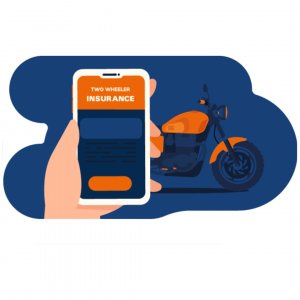What is IDV?
DV stands for Insured Declared Value, is nothing but the current market value of your car. In case of theft or total damage to your car, IDV is the sum provided to you by the insurance provider. It is usually fixed/determined by the insurance provider. IDV is one of the major factors which decide the amount of premium you end up paying to cover your car. The premium amount is often influenced by factors such as the age of the vehicle and car owners.
How is IDV calculated?
The formula used to calculate IDV in insurance is given below:
IDV = (Manufacturer’s listed selling price – depreciation) + (Accessories not included in listed selling price – depreciation) excluding registration and insurance costs.
So, let’s have a look at the formula that is used to calculate IDV in car insurance is:
With no added accessories:
Car’s IDV = Car’s selling price – Depreciation
With Added accessories:
Car’s IDV = (Car’s selling price – depreciation) + (cost of Accessories not included in listed selling price – depreciation) excluding registration and insurance costs.
Therefore, insurance and registration fees are not taken into account when determining your car’s IDV. Additionally not included are any accessories that do not come with your car as standard equipment. When you make a claim, keep this in mind to prevent any miscommunication or disappointment.
When you purchase a new car, the IDV in your insurance policy is equivalent to 95% of the manufacturer’s ex-showroom price. This is due to the fact that a new car’s depreciation is typically 5%; subtracting this from the ex-showroom price yields the above amount, or 95%. IDV decreases with time as a result of the vehicle’s age and other variables. Thus, a four-year-old car’s Insured Declared Value is lower than that of a brand-new vehicle.
What are the current depreciation rates?
The following schedule outlines how the India Motor Tariff adjusts your car’s IDV for market depreciation:
| Age of the Car | Depreciation Rate |
|---|---|
| 6 months and below | 5% |
| 6 months to 1 year | 15% |
| 1 Year to 2 Years | 20% |
| 2 Years to 3 Years | 30% |
| 3 Years to 4 Years | 40% |
| 4 Years to 5 Years | 50% |
If the car is older than five years, the insurance company’s IDV is determined by the vehicle’s condition, model, manufacturer, and availability of replacement parts. If you and your insurance can come to an amicable agreement, you can obtain the IDV value of your car, even if it is an outdated model.
Why is the IDV of my Car Important?
Your car’s IDV (age of the vehicle, car owners, premium amount) is significant for two main reasons. In the event of theft or irreparable damage to your vehicle, this is the maximum compensation you will get. Second, the premium for your insurance coverage is directly impacted by the IDV of your vehicle. A greater premium is a direct effect of a higher IDV and vice versa.
With this information, a lot of drivers consider decreasing their IDV in order to receive a lower premium. You should be aware, too, that a lower IDV may also result in a less reimbursement if your car is stolen or completely lost. This can be very disheartening. Therefore, while purchasing or renewing your auto insurance policy, it’s crucial that you use an IDV calculator to determine the accurate IDV for your car.
5 Factors that affect the IDV of your Vehicle are:
- Type of Car: The market is filled with a variety of car models. These consist of sedans, hatchbacks, SUVs, MUVs, and so on. The worth of each of these kinds of cars will vary. For instance, SUVs are typically worth more than cars. In a similar vein, sedans are often worth more than hatchbacks. Consequently, one of the first things that affects your car’s IDV is its type.
- Make & Model: The vehicle’s make and model are significant factors in determining its IDV. This is so even though they are the same automobile type (hatchback, sedan, etc.), different car brands have distinct values.
- Age & Depreciation: When figuring out your car’s IDV, this is one of the most crucial variables. As soon as you drive your car off the dealership, it begins to lose value. Additionally, the value of it decreases with age. Therefore, even if they are the same type, make, and model of automobile, an older car will have a lower IDV than a new one.
- Place of registration: A little amount of your car’s IDV is also determined by the place of registration. This is due to city-to-city variations in ex-showroom pricing.
- Accessories: Last but not least, you can consider the depreciated cost of any accessories you have installed to your car when figuring out its IDV.
All of these variables are taken into account by our car insurance cum IDV calculator, which gives you a rapid estimate of the value of your car. Your car’s IDV will appear on your screen in just a few seconds after providing a few facts.
What happens if I choose a lower IDV?
- The premium of your policy will reduce.
- This will help you save money on your car insurance policy.
- However, the sum insured your policy will be reduced.
- Therefore, you will receive less compensation in case of Total Loss.
What happens if I choose a higher IDV?
- The sum insured of your policy will increase.
- This higher sum insured can be extremely helpful in case of a total loss.
- However, the premium of your car insurance policy also increases.
When is the IDV payable?
It is rare to find claims involving your vehicle’s IDV. Setting the appropriate IDV while purchasing and renewing a vehicle insurance coverage is still crucial, though. This will guarantee that your insurance rates are reasonable given the value of your vehicle. More significantly, though, it will guarantee that you will be fairly compensated if your IDV is needed to determine the value of your claim. The following situations require you to pay attention to your vehicle’s age, car owners, and premium amount to accurately determine its IDV:
- Theft of the vehicle: One of the most frequent claims where the vehicle’s IDV is due is this one. Since theft is regarded as a total loss, the insurance provider must give the insured the insured’s current market value (IDV). This payout will assist in lessening the financial damage caused by the stolen car.
- Total loss of the vehicle: When the cost of repairs exceeds the car’s insured value, there is another type of claim for which the IDV of the vehicle is payable. Such harm may come from an accident, a natural disaster (like earthquakes), or a man-made disaster (like riots). Here, the policyholder will receive the vehicle’s IDV from the insurance provider. This will lessen the amount that he or she must contribute to the cost of a new car.
What are the different components of Car Insurance IDV?
The IDV of your car is calculated based on the following elements:
- Registration details associated with your vehicle.
- The city where your car has been registered.
- The registration date associated with your vehicle.
- The registration type
- Make, model and manufacturer of the car
- Cubic capacity of the vehicle
- Showroom price of the vehicle.
Advantages and Disadvantages of High/Low IDV
As previously said, while purchasing or renewing a vehicle insurance coverage, it is crucial to find out the actual value of IDV. In addition to assisting with claim settlement, it guarantees that you are paying the appropriate premium in accordance with the worth of your vehicle. Let’s look at a few situations where the IDV is applicable to your car and, if computed correctly, can help you get just compensation.
- In case of the theft of the vehicle.
- In case of the complete loss of the vehicle, due to an accident.
- In case of the damages done to your car due to man-made or natural calamities.
Advantages:
- IDV is the maximum amount which a policyholder can receive at the time of making a claim. So, do not reduce/ or overstate the amount of IDV as it can highly impact your claims.
- The car’s IDV is quite simple to find. The right IDV value can be found online or with the assistance of your insurance company.
- Once you get comprehensive auto insurance coverage, you can declare IDV. It assists in offering more coverage, particularly if you own a luxury or expensive vehicle or if you simply want more coverage for your policy. On the other side, if you possess an old or secondhand car, it helps you save money on high premium expenses. If your vehicle is relatively old or used, or if you want limited coverage, you can report a lesser IDV. The age of the vehicle, car owners, and premium amount all play crucial roles in determining the ideal IDV for your specific needs.
- It is not necessary for you to continually looking for your IDV. Usually, you complete it when purchasing or renewing your auto insurance.
Disadvantages:
- You may have to accept less coverage if the car’s IDV has not been computed correctly, which can be a significant disadvantage for you when it comes time to file claims.
- The insurance becomes more expensive if a greater IDV is declared since the premiums must be paid.
Frequently Asked Questions
Q1. What is IDV in car insurance?
A1. IDV stands for Insured Declared Value, which is the current market value of your car. It determines the maximum compensation you can receive in case of theft or total damage to your vehicle.
Q2. How is IDV calculated?
A2. IDV is calculated using the formula: IDV = (Manufacturer’s listed selling price – depreciation) + (Accessories not included in listed selling price – depreciation) excluding registration and insurance costs.
Q3. What are the current depreciation rates affecting IDV?
A3. Depreciation rates vary based on the age of the car, ranging from 5% for vehicles aged 6 months and below to 50% for cars aged 4 to 5 years.
Q4. Why is the IDV of my car important?
A4. IDV determines both the maximum compensation you can receive and the premium you pay for car insurance, making it a crucial factor in selecting insurance coverage.
Q5. How does choosing a lower IDV affect my policy?
A5. Opting for a lower IDV reduces the premium but also decreases the sum insured, potentially resulting in less compensation in case of total loss.
Q6. What happens if I choose a higher IDV?
A6. A higher IDV increases the sum insured, providing more compensation in case of total loss, but it also leads to higher insurance premiums.
Q7. When is the IDV payable?
A7. IDV is payable in cases of theft or total loss of the vehicle due to accidents, natural disasters, or man-made calamities.
Q8. What components are considered in calculating Car Insurance IDV?
A8. Factors such as registration details, city of registration, vehicle make and model, cubic capacity, and showroom price are considered in calculating IDV.
Q9. What are the advantages of having the right IDV?
A9. The right IDV ensures proper compensation during claims and helps in managing premium costs effectively, providing peace of mind and financial security.
Q10. What are the disadvantages of incorrectly calculated IDV?
A10. Incorrectly calculated IDV may result in insufficient coverage during claims, leading to financial loss. Additionally, higher IDVs increase insurance costs, affecting affordability.











